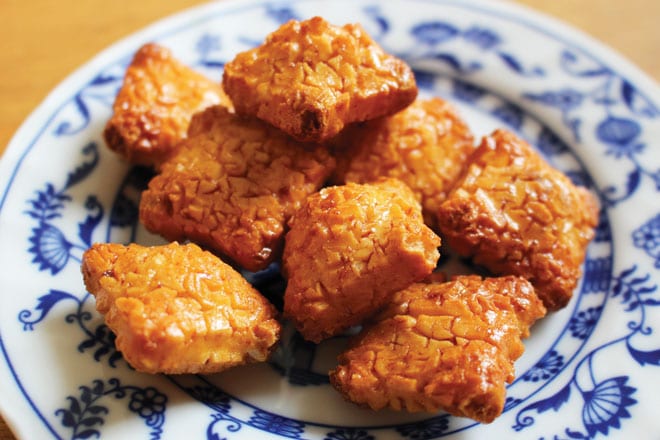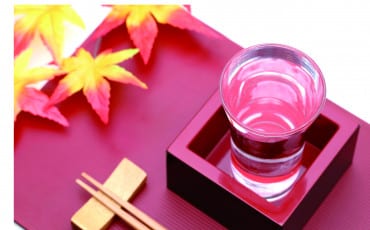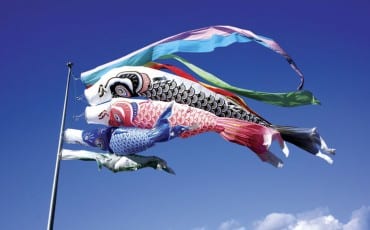- OISHII
- OISHII Wiki
- Dishes
- Okaki mochi
OISHII Wiki
Dishes
Okaki mochi

You’re likely to find the traditional rice cracker okaki on any Japanese supermarket shelf. Salty and crispy, okaki is a popular snack in Japan. Made from dried mochi that’s been toasted and cut, okaki is usually savoury and comes plain or in a range of toppings.
Okaki was originally made as a way to use leftover kagami mochi, those large, round New Year decorative rice cakes that are placed as an offering in a family home. After a few days left out in the cold, kagami mochi would become hard, so okaki was created as a way to use up the mochi and prevent wastage.
Some people still believe that making okaki must be done correctly to prevent bad luck or misfortune. Knives or other sharp objects cannot be used to slice the rice cakes because it is considered inauspicious. The rice cakes can be smashed only with a hammer, hence the irregular shapes of okaki that you often see today.
Beyond superstitions, making okaki demands a lot of care as the crackers are delicate and break easily. Steamed white rice is first pounded into a paste and kneaded in wooden moulds. These rice cakes are then dried for a few days, baked, coated with soy sauce and deep-fried in oil. The manufacturing process is a long-drawn affair and can take up to a week!
Okaki is often eaten as a beer snack as it pairs well with alcohol, thanks to its savoury taste and addictive crunch. The most common flavour is soy sauce, but there are plenty of other okaki flavours out there, such as shrimp, nori seaweed and even mayonnaise. Some are also lightly glazed in sugar.
But don’t mistake okaki for senbei crackers. The latter is what most of us outside Japan are familiar with, with their round shape and soy sauce or salt flavours. Senbei is made from non-glutinous rice or wheat flour. There is also a third type of Japanese rice cracker known as arare, which is a smaller, bite-sized version of okaki.









